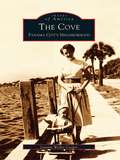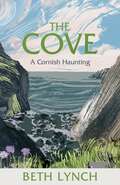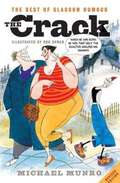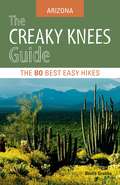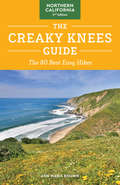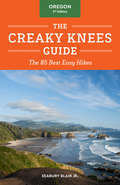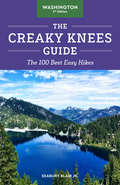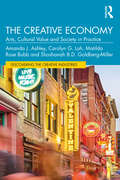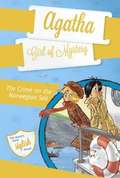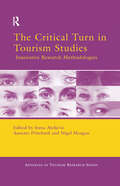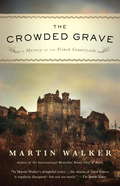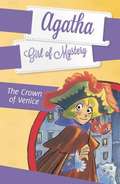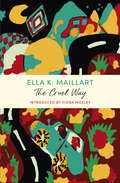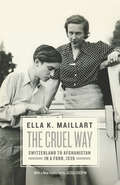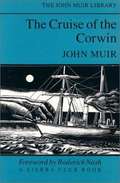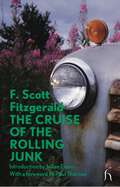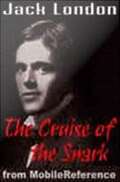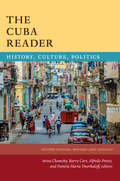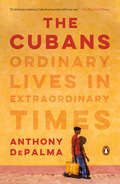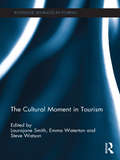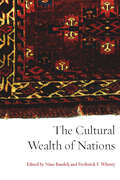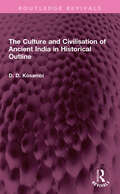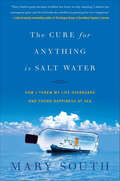- Table View
- List View
The Cove, Panama City's Neighborhood
by Jeannie Weller CooperThe Cove, or Bunker's Cove, is a place that remains virtually untouched by time. Nestled within the confines of beautiful Panama City and only a stone's throw away from St. Andrews Bay, The Cove abounds with rich tradition and charm. Before tourism moved farther south, the area was a haven for those from more hectic locales, with local businessmen including A.J. Gay, T.H. Harmon, W.C. Sherman, L.H. Howell, and H.L. Suddeth promoting the area's heavily forested, game-rich peninsula. The surrounding waters teemed with snapper, flounder, crabs, and shrimp, supporting locals and drawing tourists, including actor Clark Gable. Amidst changing times, the neighborhood has survived and continues to thrive. This must-have photo album, filled with many never-before-seen images culled from a variety of local sources, is a fitting tribute to this peaceful community. Residents and tourists alike will discover what it was like to live, work, and play in The Cove of yesteryear. Snapshot glimpses of the past bring to life the neighborhood as it is fondly remembered-the corner markets, the shipyard and air corps neighbors, Cove School, and the Cove Hotel.
The Cove: A Cornish Haunting
by Beth LynchFor over five decades Beth Lynch has been drawn back, over and again, to a rocky spot on the North Cornwall coast. Her earliest memories of the cove are bound up with idyllic family holidays; as she grows older, however, her sense of connection with the place grows deeper and more complicated. This slippery interface of land and sea - a site of sheer edges and ledges, peculiar rock formations and eroding, tumbling slate - becomes her childhood refuge from anxiety and school bullying.Around the time of her parents' deaths, strange things start to happen in and around the cove, and Lynch is left wondering how well she really knows this minute section of coast that draws her so ineluctably. Is it the cove, or is it her? What secrets does the cove have to share? Is she safer staying away? Unfolding through a medium of salt and slate, the elemental indifference of Atlantic Cornwall, The Cove is a lyrical meditation on being a revenant, on haunting and being haunted. Through encounters with quarrymen, wartime women and a enigmatic archaeologist - along with JMW Turner, Alfred, Lord Tennyson, Anthony Trollope, and Thomas and Emma Hardy - Lynch contemplates what happens when our deepest fears materialise, reflecting on mortality and the nuanced ways in which we take leave of our dead. She explores the profound impacts of change - in ourselves, in places and in the transformative dance between the two.
The Crack: The Best of Glasgow Humour
by Michael MunroA compendium of the Scottish city&’s wit, wisdom, and wisecracks: &“This book's a stoatybumber, so it is.&” —Scots Magazine Humour is one of the cornerstones of Glasgow life. A look at the history of popular entertainment in the city shows that Glasgow has always enjoyed a good laugh, and the homegrown variety best of all. In this new and expanded edition of his bestselling book, Michael Munro has produced a hilarious compendium of the wit and wisdom of Glasgow. While many of the jokes and stories are classics that continue to amuse today, either in their original form or updated to reflect contemporary tastes and preoccupations, The Crack also includes a huge amount of material that will be new to many. No subject, sacred or profane, is safe from scrutiny—and the Glasgow tongue respects no bounds of taste.
The Creaky Knees Guide Arizona: The 80 Best Easy Hikes (Creaky Knees)
by Bruce GrubbsThe Creaky Knees Guide Arizona is a hiking guidebook filled with kinder, gentler trails. Created for anyone who--regardless of age--can't or doesn't want to hike great distances over rough terrain to gain beautiful vistas and enjoy the wilderness. Here are 80 of the best easy-to-walk hikes throughout the state. Most are day hikes, but there are a handful of backpack trips worthy of the Creaky Knees stamp of approval.Trails are divided into regions: Grand Canyon, Northeast Plateaus, San Francisco Peaks Area, Mogollon Rim Country, Central Highlands, White Mountains, Phoenix Area, Tucson Area, Southern Mountains, and Western Deserts.In addition to a full-trip description, each hike includes: Elevation gains, including a topographical map. Clear, up-to-date driving directions. Mileage and estimated hiking time, trail conditions, effort level, best season, map references, exploring options, access, permits required, and where to find more information. Further directions to offshoot hikes, if you reach the end of the hike, but want to extend your workout.A chart at the front of the book compiles the hikes per effort level required, overall hike rating, and best season(s) to hit the trails.Written in a personal but informative tone by outdoors expert Bruce Grubbs, this Creaky Knees guidebook is a perfect resource anyone can use to explore the beauty of Arizona, without breaking too much of a sweat.
The Creaky Knees Guide Northern California, 2nd Edition: The 80 Best Easy Hikes (Creaky Knees)
by Ann Marie BrownThis fully updated edition of this bestselling easy hiking guide (over 10,000 sold) features the 80 best low-impact day hikes in Northern California, perfect for aging baby boomers, seniors, those traveling with small children, and anyone else interested more in a stroll than a climb.From hikes just outside of San Francisco to long strolls in the Sierra Nevada, this book covers 80 of the best easy-to-walk hikes throughout the region, providing elevation gains, detailed maps, and up-to-date driving directions. It also includes hike mileage and estimated hiking times, trail conditions, access and permit requirements, and ratings of each hike's difficulty, from "Stroll in the Park" to "Prepare to Perspire." Offshoot hikes are featured for those who reach the end of the hike but want to extend their workout. Written in a personal but informative tone by outdoors expert Ann Marie Brown, the Creaky Knees Guide is a perfect resource anyone can use to explore the beauty of Northern California without breaking too much of a sweat.
The Creaky Knees Guide Oregon, 3rd Edition: The 85 Best Easy Hikes (Creaky Knees)
by Seabury BlairThe updated edition of this bestselling guide (25,000 copies sold) features 85 of the best low-impact day hikes in Oregon state, perfect for aging baby boomers, seniors, those traveling with small children, and anyone else interested more in a stroll than a climb.The Creaky Knees Guide Oregon is a day-hiking guidebook filled with kinder, gentler trails, featuring the best easy-to-walk hikes throughout the state. Written in an informative style that will appeal to anyone, regardless of age, the guide covers hikes in six regions throughout the state, including the Oregon Coast, Columbia River Gorge, and Mount Hood. There is also a section on urban hikes and walks. Each trail description includes elevation gains, including a topographical map; clear, up-to-date driving directions; mileage and estimated hiking time; trail conditions; and more.This guide by Day Hike! series author Seabury Blair Jr. is a perfect resource anyone can use to explore the beauty of the Northwest, without breaking too much of a sweat.
The Creaky Knees Guide Washington, 3rd Edition: The 100 Best Easy Hikes (Creaky Knees)
by Seabury BlairThe updated edition of this bestselling guide (25,000 copies sold) features 85 of the best low-impact day hikes in Oregon state, perfect for aging baby boomers, seniors, those traveling with small children, and anyone else interested more in a stroll than a climb.The Creaky Knees Guide Oregon is a day-hiking guidebook filled with kinder, gentler trails, featuring the best easy-to-walk hikes throughout the state. Written in an informative style that will appeal to anyone, regardless of age, the guide covers hikes in six regions throughout the state, including the Oregon Coast, Columbia River Gorge, and Mount Hood. There is also a section on urban hikes and walks. Each trail description includes elevation gains, including a topographical map; clear, up-to-date driving directions; mileage and estimated hiking time; trail conditions; and more.This guide by Day Hike! series author Seabury Blair Jr. is a perfect resource anyone can use to explore the beauty of the Northwest, without breaking too much of a sweat.
The Creative Economy: Arts, Cultural Value and Society in Practice (Discovering the Creative Industries)
by Shoshanah B.D. Goldberg-Miller Amanda J. Ashley Carolyn G. Loh Matilda Rose BubbThe creative economy permeates our everyday lives, shaping where we live, what we buy, and how we interact with others. Looking at dimensions of people, place, policy, and market forces, the book offers a comprehensive perspective on arts and culture, in both economic and social life.The book explores the multifaceted components that make up this complex field. Underlying this journey is the throughline of diversity, equity, and inclusion as watchwords of today’s global paradigm. Capital, gentrification, pay disparities, and the hegemonic confines of cultural production are a few of the key issues analyzed. Using case studies and stories of artists and creatives from the worlds of fashion, design, music, and the media arts, the book also delves into gastronomy, literature, architecture, and theatre—presenting a nuanced look at the ways in which the creative sector impacts the world today. Readers will benefit from features such as key takeaways, discussion questions, and activities, throughout the chapters.Students, scholars, policymakers, and the general public will find this a valuable resource. This book offers the reader a chance not only to understand the cultural and creative industries, but to internalize its elements and embrace the creative spirit that imbues the sector.
The Crime on the Norwegian Sea #10
by Maya Gold Stefano Turconi Steve StevensonAgatha always saves the day in style!It's finally vacation time, and the Mistery cousins are enjoying a cruise on a luxurious transatlantic ship called the King Arthur. Unfortunately, crime never takes a rest! Agatha and her friends get caught up in a spy conspiracy, in which they must retrieve a top-secret document and capture an unstoppable killer. And they have to pull it off without Uncle Sam, Larry's nosy father, catching on!
The Critical Turn in Tourism Studies: Creating An Academy Of Hope (Advances In Tourism Ser.)
by Annette Pritchard Nigel Morgan Irena AteljevicNew approaches to tourism study demonstrate a notable ‘critical turn’ – a shift in thought that emphasises interpretative and critical modes of tourism inquiry. The chapters in this volume reflect this emerging critical school of tourism studies and represent a coordinated effort of tourism scholars whose work engages innovative research methodologies. Since such work has been dispersed across a variety of tourism-related and other research fields, this book responds to a pressing need to consolidate recent advances in a single text. Adopting a broad definition of ‘criticality’, the contributors seek to find ‘fresh’ ways of theorising tourism by locating the phenomenon in its wider political, economic, cultural and social contexts. The collection addresses the power relations underpinning the production of academic knowledge; presents a range of qualitative data collection methods which confront the field’s dominant (post)positivist approaches; foregrounds the emotional dynamics of research relations and explores the personal, the political and the situated nature of research journeys.The book has been divided into two parts, with the essays in the first part establishing a context-specific framework for engaging philosophical and theoretical debates in contemporary tourism enquiry. The second set of essays then present, discuss and critique specific methodologies, research techniques, methods of interpretation and writing strategies, all of which are in some sense illustrative of ‘critical’ tourism research. Contributors range from postgraduate students to established academics and are drawn from both the geopolitical margins and the ‘powerbases’ of the tourism academy. Their various relationships with the English-speaking academy thus range from relative ‘outsider’ to well-positioned ‘insider’ and as a result, their essays are reflective of a range of locations within the complexly spun web of academic power relations and social divisions.
The Critical Turn in Tourism Studies: Creating an Academy of Hope (Advances in Tourism)
by Annette Pritchard Nigel Morgan Irena AteljevicIn today’s increasingly complex tourism environment, decision-making requires a rounded, well-informed view of the whole. Critical distance should be encouraged, consultation and intellectual rigour should be the norm amongst managers and there needs to be a radical shift in our approach to educating future tourism and hospitality managers and researchers. This second edition intends to move the debate forward by exploring how critical tourism inquiry can make a difference in the world, linking tourism education driven by the values of empowerment, partnership and ethics to policy and practice. This volume is designed to enable its reader to think through vital concepts and theories relating to tourism and hospitality management, stimulate critical thinking and use multidisciplinary perspectives. The book is organized around three key ways of producing social change in and through tourism: critical thinking, critical education and critical action. Part one focuses on the importance of critical thinking in tourism research and deals with two key topics of our academic endeavours (i) tourism epistemology and theoretical and conceptual developments; (ii) research entanglements, knowledge production and reflexivity. Part two considers ‘the university as a site for activism’ by mapping out the moral, academic and practical role of educators in developing ethical and responsible graduates and explores the student experience. The final part attempts to provide new understandings of the ways in which social justice and social transformation can be achieved in and through tourism. This timely and thought provoking book which collectively questions tourism’s current and future role in societal development is essential reading for students, researchers and academics interested in Tourism & Hospitality.
The Crowded Grave: A Mystery Of The French Countryside (Bruno, Chief Of Police Ser. #4)
by Martin WalkerAnother delectable serving of mystery and the pleasures of the Dordogne from the newest master of suspense, Martin Walker. It's spring in the idyllic village of St. Denis, and for Chief of Police Bruno Courrèges that means lamb stews, bottles of his beloved Pomerol, morning walks with his hound, Gigi--and a new string of regional crimes and international capers. When a local archaeological team looking for Cro-Magnon and Neanderthal remains turns up a corpse with a watch on its wrist and a bullet in its head, it's up to Bruno to solve the case. But the task will not be easy, not with a meddlesome new magistrate eager to make a strong impression, an ongoing series of attacks by animal rights activists on local foie gras producers, and a nearby summit between France and Spain approaching--not to mention two beautiful, brilliant women vying for Bruno's affections. Complicating events even further, the professor in charge of the dig is soon reported missing, leading Bruno to suspect that the past and the present are bound up in dangerous ways. As summer approaches, the wine growing cooler and the fruit sweeter, Bruno's investigations take him indelibly deeper into contemporary Europe's dark history of terrorist and counterterrorist tactics--and toward a dramatic finale. As savory as foie gras, as piquant as vin de noix, and as richly complex as the region's truffles, The Crowded Grave is a feast for mystery lovers and Francophiles alike.
The Crown of Venice #7
by Stefano Turconi Sir Steve StevensonAgatha heads to Italy in this exciting new mystery! Agatha and her cousin Dash are hot on the trail of the missing crown of Venice. The ancient relic, worn by the Doges--or Dukes--of Venice, was stolen during the city's famous carnival, and it seems like everyone is a suspect.
The Cruel Way: A John Murray Journey (Overcoming Books)
by Ella K MaillartINTRODUCED BY FIONA MOZLEY, Booker-shortlisted author of ElmetWITH EXCERPTS FROM ALL THE ROADS ARE OPEN BY ANNEMARIE SCHWARZENBACH'We were both travellers - she always running away from an emotional crisis (not seeing that she was already wishing for the next), I always seeking far afield the secret of harmonious living, or filling up time by courting risk, caught by the clean sharp "taste" it gives to life.'In 1939, adventurer and writer Ella Maillart set off on an epic drive from Geneva to Kabul, accompanied by journalist and photographer Annemarie Schwarzenbach, who later became an antifascist and lesbian icon. The two women travelled partly to escape the coming war in Europe, embarking on a daring, and often dangerous, journey through regions where European women were a rarity. But Schwarzenbach was also fighting a losing battle with morphine addiction, and the women's close but often troubled relationship takes centre stage in the narrative as the journey progresses through Turkey, Iran and Afghanistan. Encountering breathtaking landscapes, ancient ruins and nomadic peoples, The Cruel Way is a gripping, lyrical and deeply empathetic portrait of places, people and friendship. Brought together for the first time with excerpts from All the Roads are Open, Annemarie Schwarzenbach's parallel account of the journey.
The Cruel Way: Switzerland to Afghanistan in a Ford, 1939
by Ella K. MaillartIn 1939 Swiss travel writer and journalist Ella K. Maillart set off on an epic journey from Geneva to Kabul with fellow writer Annemarie Schwarzenbach in a brand new Ford. As the first European women to travel alone on Afghanistan's Northern Road, Maillart and Schwarzenbach had a rare glimpse of life in Iran and Afghanistan at a time when their borders were rarely crossed by Westerners. As the two flash across Europe and the Near East in a streak of élan and daring, Maillart writes of comical mishaps, breathtaking landscapes, vitriolic religious clashes, and the ingenuity with which the women navigated what was often a dangerous journey. In beautiful, clear-eyed prose, The Cruel Way shows Maillart's great ability to explore and experience other cultures in writing both lyrical and deeply empathetic. While the core of the book is the journey itself and their interactions with people oppressed by political conflict and poverty, towards the end of the trip the women's increasingly troubled relationship takes center stage. By then the glamorous, androgynous Schwarzenbach, whose own account of the trip can be found in All the Roads Are Open, is fighting a losing battle with her own drug addiction, and Maillart's frustrated attempts to cure her show the profound depth of their relationship. Complete with thirteen of Maillart's own photographs from the journey, The Cruel Way is a classic of travel writing, and its protagonists are as gripping and fearless as any in literature.
The Cruise of the Corwin
by John MuirThis latest addition to the John Muir Library -- our ongoing program to reissue the complete works of the first great conservationist author -- combines adventures in the Arctic North with Muir's perceptions. Founder of the Sierra Club, Muir did more than any other individual to shape the 20th-century conservation movement.
The Cruise of the Rolling Junk
by F. Scott FitzgeraldIn an early series of journalistic pieces for Motor magazine, F. Scott Fitzgerald described a journey he took with his wife Zelda from Connecticut to Alabama in a clapped out automobile which he called the "Rolling Junk."
The Cruise of the Snark
by Jack LondonThe Cruise of the Snark (1911) is a memoir of Jack and Charmian London''s 1907-1909 voyage across the Pacific. His descriptions of surf-riding, which he dubbed a royal sport, helped introduce it to and popularize it with the mainland. London writes: Through the white crest of a breaker suddenly appears a dark figure, erect, a man-fish or a sea-god, on the very forward face of the crest where the top falls over and down, driving in toward shore, buried to his loins in smoking spray, caught up by the sea and flung landward, bodily, a quarter of a mile. It is a Kanaka on a surf-board. And I know that when I have finished these lines I shall be out in that riot of colour and pounding surf, trying to bit those breakers even as he, and failing as he never failed, but living life as the best of us may live it. . from Wikipedia, The Free Encyclopedia. Intuitive navigation. . Text annotation and mark-up. .
The Cuba Reader: History, Culture, Politics (The Latin America Readers)
by Aviva Chomsky Barry Carr Pamela Maria Smorkaloff Alfredo PrietoTracking Cuban history from 1492 to the present, The Cuba Reader includes more than one hundred selections that present myriad perspectives on Cuba's history, culture, and politics. The volume foregrounds the experience of Cubans from all walks of life, including slaves, prostitutes, doctors, activists, and historians. Combining songs, poetry, fiction, journalism, political speeches, and many other types of documents, this revised and updated second edition of The Cuba Reader contains over twenty new selections that explore the changes and continuities in Cuba since Fidel Castro stepped down from power in 2006. For students, travelers, and all those who want to know more about the island nation just ninety miles south of Florida, The Cuba Reader is an invaluable introduction.
The Cubans: Ordinary Lives in Extraordinary Times
by Anthony DePalmaModern Cuba comes alive in a vibrant portrait of a group of families's varied journeys in one community over the last twenty years. <P><P>Cubans today, most of whom have lived their entire lives under the Castro regime, are hesitantly embracing the future. In his new book, Anthony DePalma, a veteran reporter with years of experience in Cuba, focuses on a neighborhood across the harbor from Old Havana to dramatize the optimism as well as the enormous challenges that Cubans face: a moving snapshot of Cuba with all its contradictions as the new regime opens the gate to the capitalism that Fidel railed against for so long. <P><P>In Guanabacoa, longtime residents prove enterprising in the extreme. Scrounging materials in the black market, Cary Luisa Limonta Ewen has started her own small manufacturing business, a surprising turn for a former ranking member of the Communist Party. Her good friend Lili, a loyal Communist, heads the neighborhood's watchdog revolutionary committee. <P><P>Artist Arturo Montoto, who had long lived and worked in Mexico, moved back to Cuba when he saw improving conditions but complains like any artist about recognition. In stark contrast, Jorge García lives in Miami and continues to seek justice for the sinking of a tugboat full of refugees, a tragedy that claimed the lives of his son, grandson, and twelve other family members, a massacre for which the government denies any role. In The Cubans, many patriots face one new question: is their loyalty to the revolution, or to their country? <P><P>As people try to navigate their new reality, Cuba has become an improvised country, an old machine kept running with equal measures of ingenuity and desperation. A new kind of revolutionary spirit thrives beneath the conformity of a half century of totalitarian rule. And over all of this looms the United States, with its unpredictable policies, which warmed towards its neighbor under one administration but whose policies have now taken on a chill reminiscent of the Cold War.
The Cultural Moment in Tourism (Advances in Tourism)
by Emma Waterton Steve Watson Laurajane SmithThis book is a response to the burgeoning interest in cultural tourism and the associated need for a coherently theorized approach for understanding the practices that such an interest creates. Cultural tourism has become an important and popular aspect of contemporary tourism studies, as well as providing a rich seam of upscale product development opportunities in the industry as a whole. Much of the related literature, however, focuses upon describing and categorizing cultural tourism from a supply-side perspective. This has prompted the taxonomizing of cultural tourists on the basis of their level of involvement and interest in cultural tourism products and/or their economic worth as a sought after market segment. There have been few recent attempts at a rigorous re-theorization of the issues beyond conventional representational theories; this book aims to fill that void. This groundbreaking volume provides a theoretical and empirical account of what it means to be a cultural or heritage tourist. It achieves this by exploring the interactions of people with places, spaces, intangible heritage and ways of life, not as linear alignments but as seductive ‘moments’ of encounter, engagement, performance and meaning-making, which are constitutive of cultural experience in its broadest sense. The book further explores encounters in cultural tourism as events that capture and constitute important social relations involving power and authority, self-consciousness and social position, gender and space, history and the present. It also explores the consequences these insights have for our understanding of culture and heritage and its management in the context of tourist activity. In capturing the ‘cultural moment’, this book provides a better understanding of the motivations, on-site activities, meaning constructions and other cultural work done by both tourists and tourist operators. The volume confronts and explores the cultural, political and economical interrelations between culture, heritage and the tourism industry. In so doing, it also investigates how this co-mingling of identity, representation and social life may be better apprehended with the wider shift in critical thought towards notions of affect and performativity. The book is a fundamental and influential contribution to research in this field. It will be of significant value to students, academics and researchers interested in this broad topic area.
The Cultural Wealth of Nations
by Nina Bandelj Frederick F. WherrySymbolic resources affect social, cultural, and economic development. The value of being "Made in America" or "Made in Italy," for example, depends not only on the material advantages each place offers but also on the symbolic resources embedded in those places of production. Drawing on case studies that range from the vineyards of South Africa and the textiles of Thailand to the Mundo Maya in Latin America and tourist destinations in Tuscany, this volume examines the various forms that cultural wealth takes, the processes involved in its construction, and the ways it is deployed. Leading scholars from a range of disciplinary backgrounds examine how symbolic resources and cultural understandings help firms and regions develop. Through a thoughtful analysis of current- day cases, as well as historical developments,The Cultural Wealth of Nationsoffers an exciting new alternative to standard economic explanations about the wealth and poverty of nations.
The Culture and Civilisation of Ancient India in HIstorical Outline (Routledge Revivals)
by D D KosambiFirst published in 1965, The Culture and Civilisation of Ancient India in Historical Outline is a strikingly original work, the first real cultural history of India. The main features of the Indian character are traced back into remote antiquity as the natural outgrowth of historical process. Did the change from food gathering and the pastoral life to agriculture make new religions necessary? Why did the Indian cities vanish with hardly a trace and leave no memory? Who were the Aryans – if any? Why should Buddhism, Jainism, and so many other sects of the same type come into being at one time and in the same region? How could Buddhism spread over so large a part of Asia while dying out completely in the land of its origin? What caused the rise and collapse of the Magadhan empire; was the Gupta empire fundamentally different from its great predecessor, or just one more ‘oriental despotism’? These are some of the many questions handled with great insight, yet in the simplest terms, in this stimulating work. This book will be of interest to students of history, sociology, archaeology, anthropology, cultural studies, South Asian studies and ethnic studies.
The Cure for Anything Is Salt Water: How I Threw My Life Overboard and Found Happiness at Sea
by Mary SouthAt forty, Mary South had a beautiful home, good friends, and a successful career in book publishing. But she couldn't help feeling that she was missing something intangible but essential. So she decided to go looking for it . . . at sea. Six months later she had quit her job, sold the house, and was living aboard a forty-foot, thirty-ton steel trawler she rechristened Bossanova. Despite her total lack of experience, South set out on her maiden voyage—a fifteen-hundred-mile odyssey from Florida to Maine—with her one-man, two-dog crew. But what began as the fulfillment of an idle wish became a crash course in navigating the complicated byways of the self.
